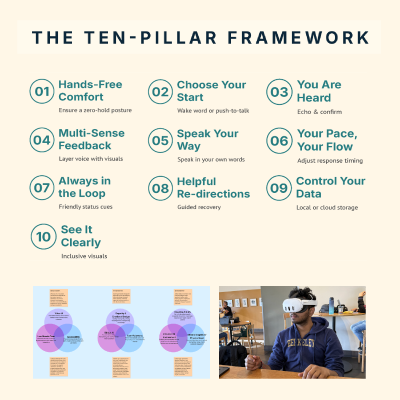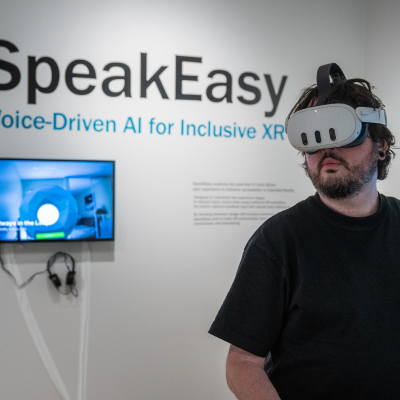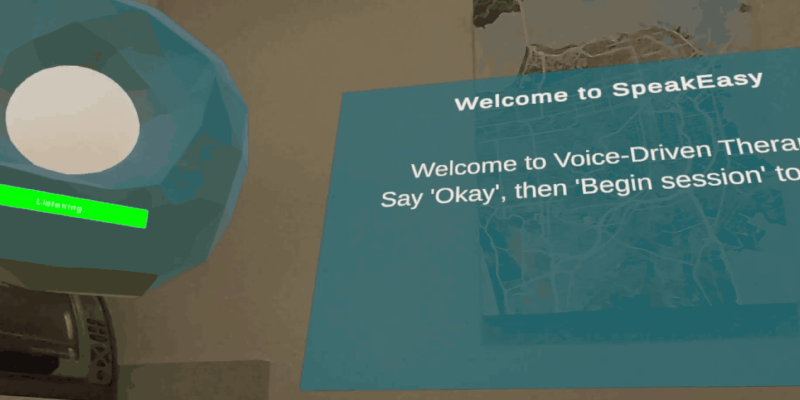2025
SpeakEasy: Voice-Driven AI for Inclusive XR
Michael Chaves
This thesis explores how voice-driven artificial intelligence can make extended reality (XR) more inclusive for users with limited mobility. Recognizing that most XR systems still depend on handheld controllers, SpeakEasy investigates how natural speech can serve as a primary mode of interaction—reducing physical barriers and fostering emotional ease. Through literature review, participatory co-design sessions, and iterative prototyping, the project developed a Ten-Pillar Framework for Accessible Voice Interaction in Spatial Computing, addressing factors such as feedback clarity, user autonomy, and ethical data control.


The final SpeakEasy prototype demonstrates hands-free, voice-based navigation in a
mixed-reality wellness environment, enabling users to complete tasks, receive adaptive
feedback, and engage in guided experiences using only speech. User testing showed
high satisfaction and strong usability, suggesting that natural language and real-time
AI personalization can make immersive technologies more intuitive and equitable. By
centering accessibility from the start, SpeakEasy offers designers a practical roadmap
toward XR experiences that welcome more bodies, voices, and perspectives.
